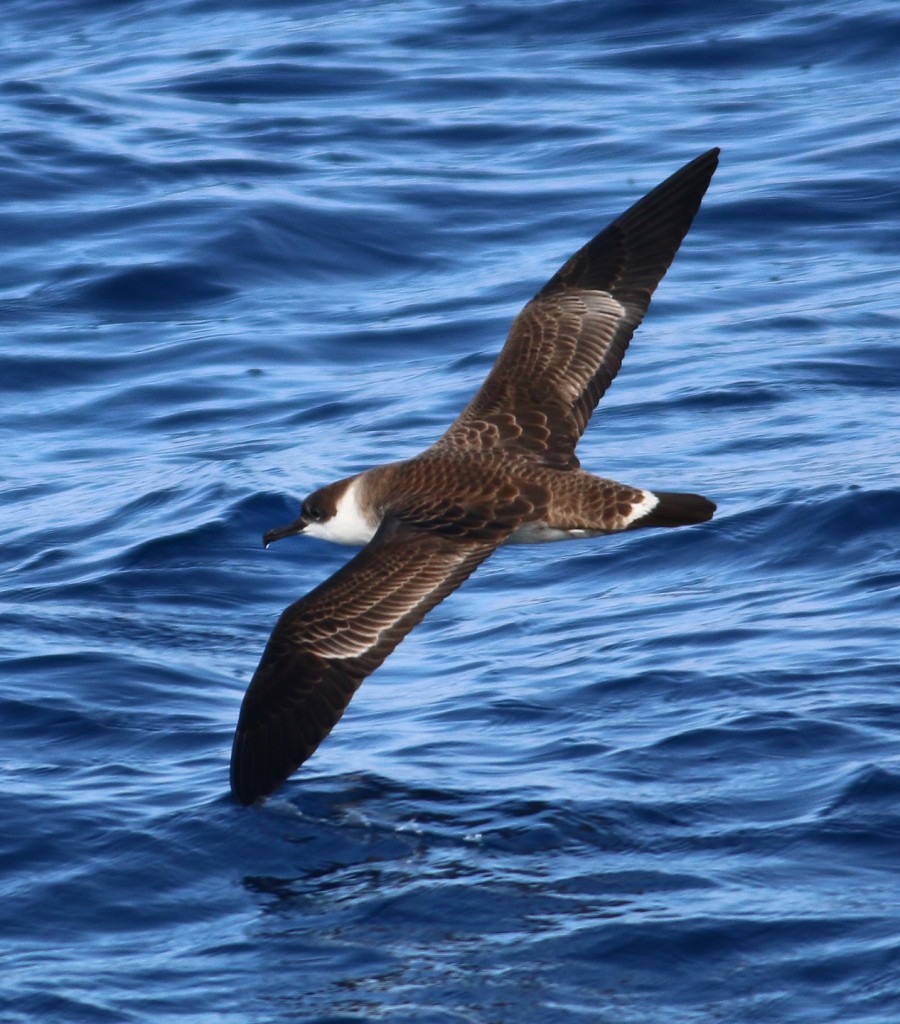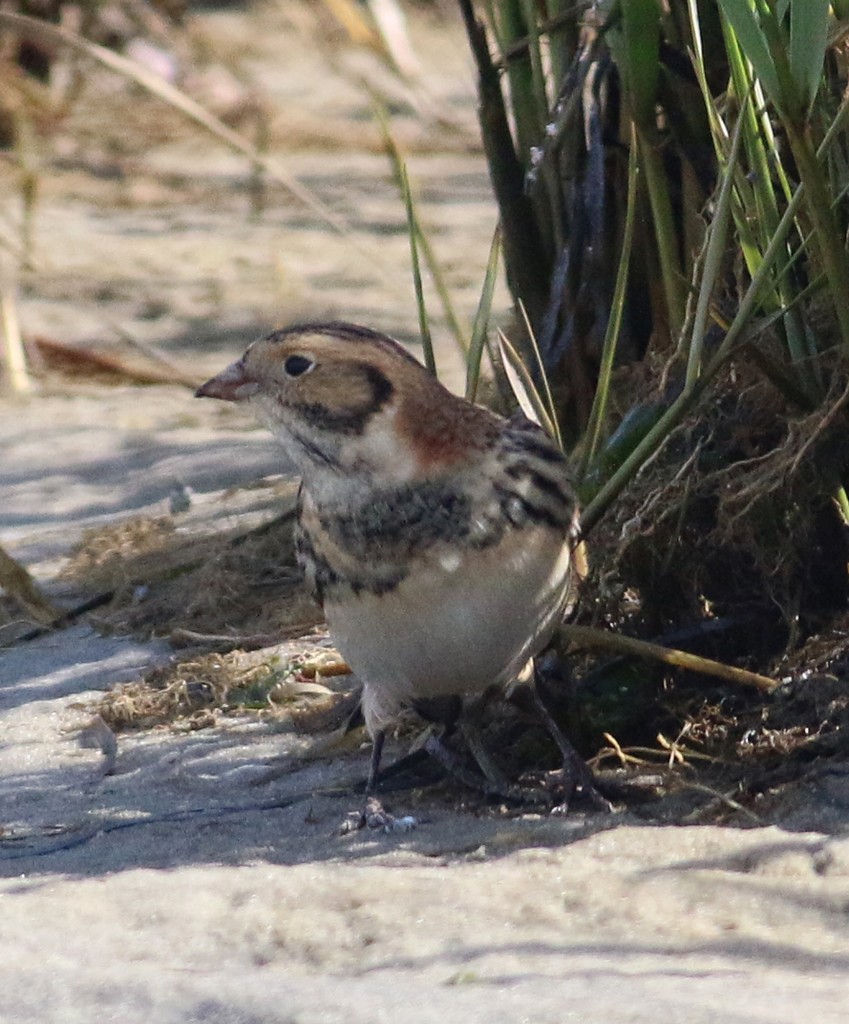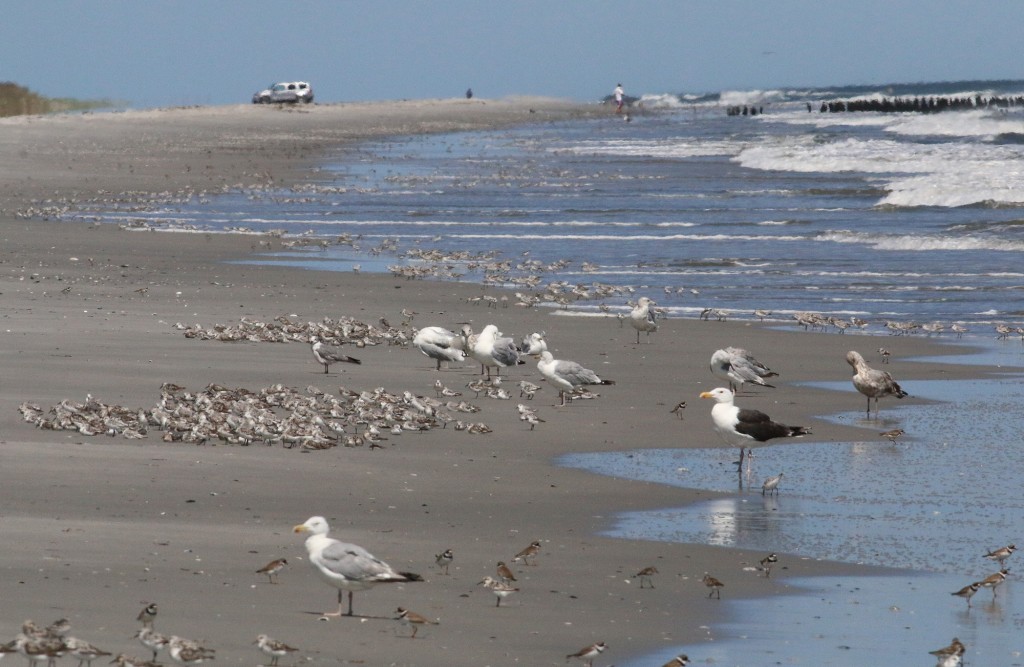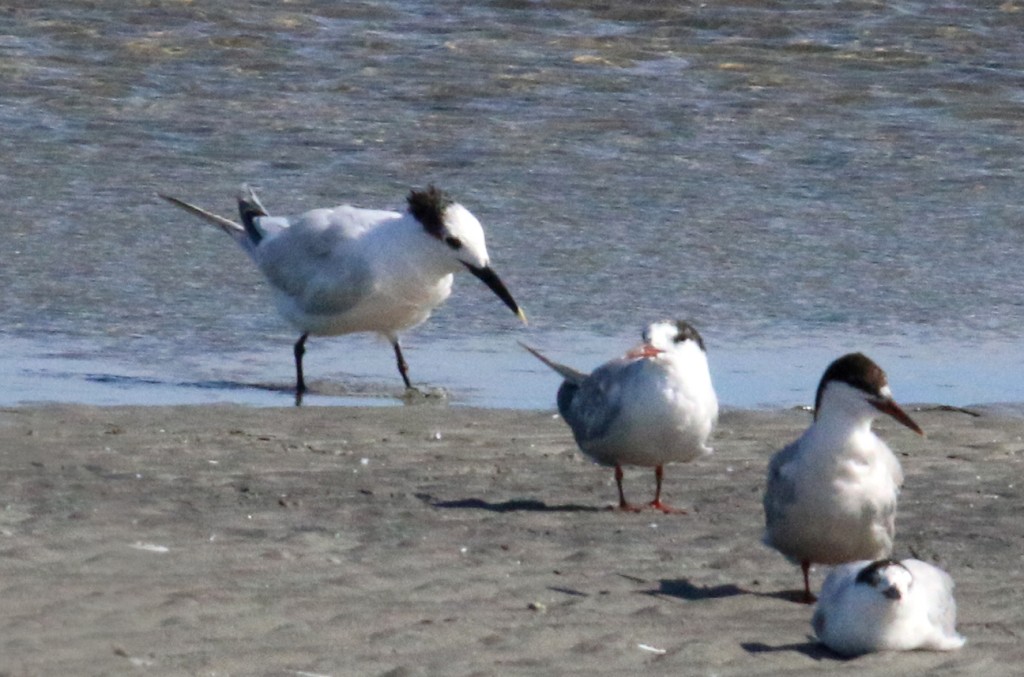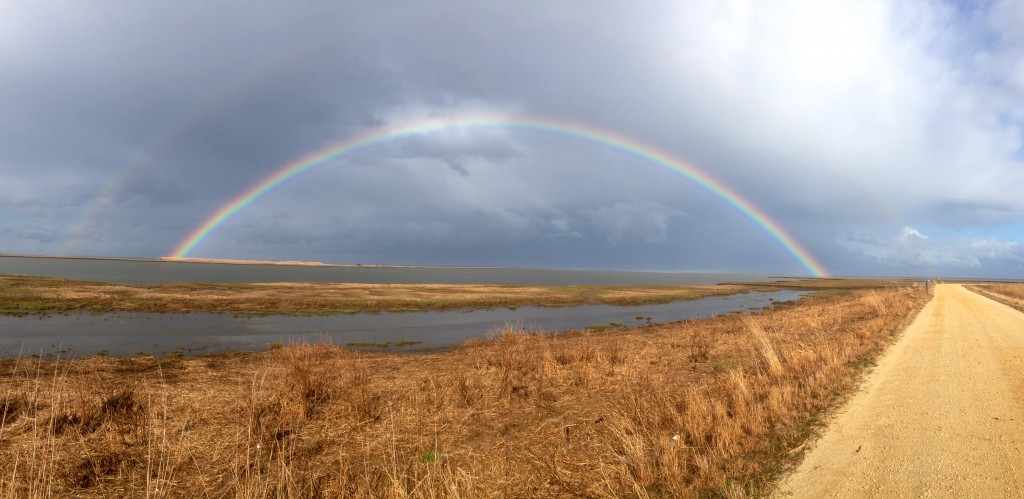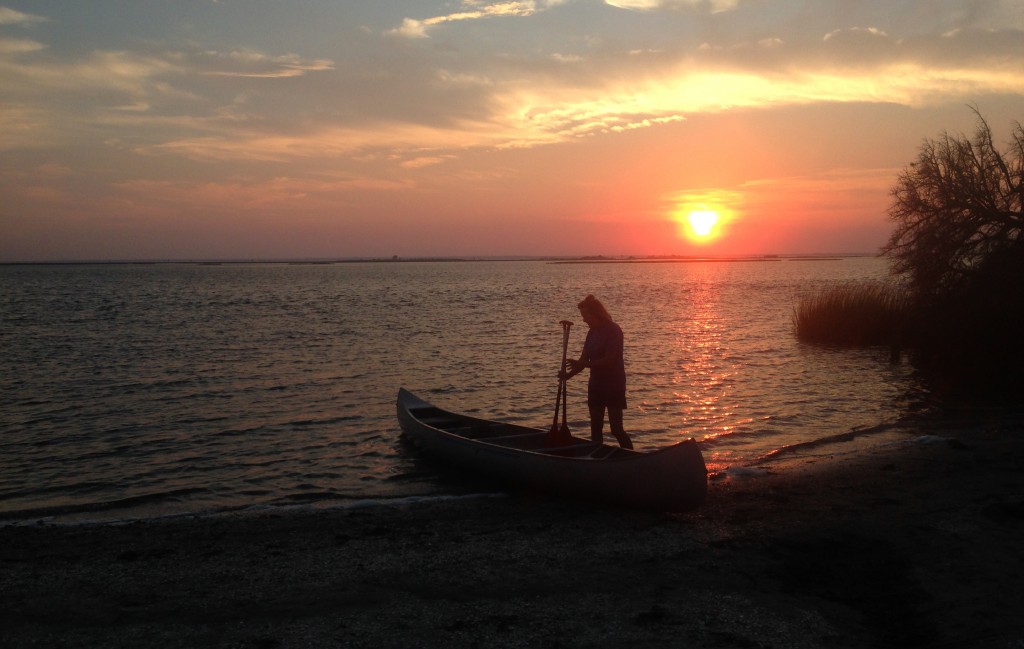2016 was a great birding year for me. Correction: it was a TERRIFIC birding year for me. A super year. An outstanding year. I assume that you get the picture. How good was it? One measure was that I saw two long sought-after lifers this year in New Jersey (Wilson’s Storm-petrel and Philadelphia Vireo), but neither one of them individually made the top-ten list. Also not making the list were Varied Thrush, Red-necked Phalarope, Fork-tailed Flycatcher, or any other birds that were chased this year; somehow those chased birds seem less and less interesting each year. Well, that’s enough about what didn’t make the list. What did make it? Let’s count them down.
10. Springtime on the Bashakill. I don’t get many chances to bird with brother Rich these days, but in May we took an extended weekend, heading up to the Bashakill in Orange County NY, stopping at Garrett Mountain on the way back. There were no super-rarities, but the weather was perfect, we had no shortage of nice birds (several Mourning Warblers, my first ever perched Common Nighthawk, and a pair of Yellow-bellied Flycatchers), and it was just great birding again with Rich, being in the rolling hills of southern NY, and meeting John Haas out on the trail. What a super area to visit during spring migration.
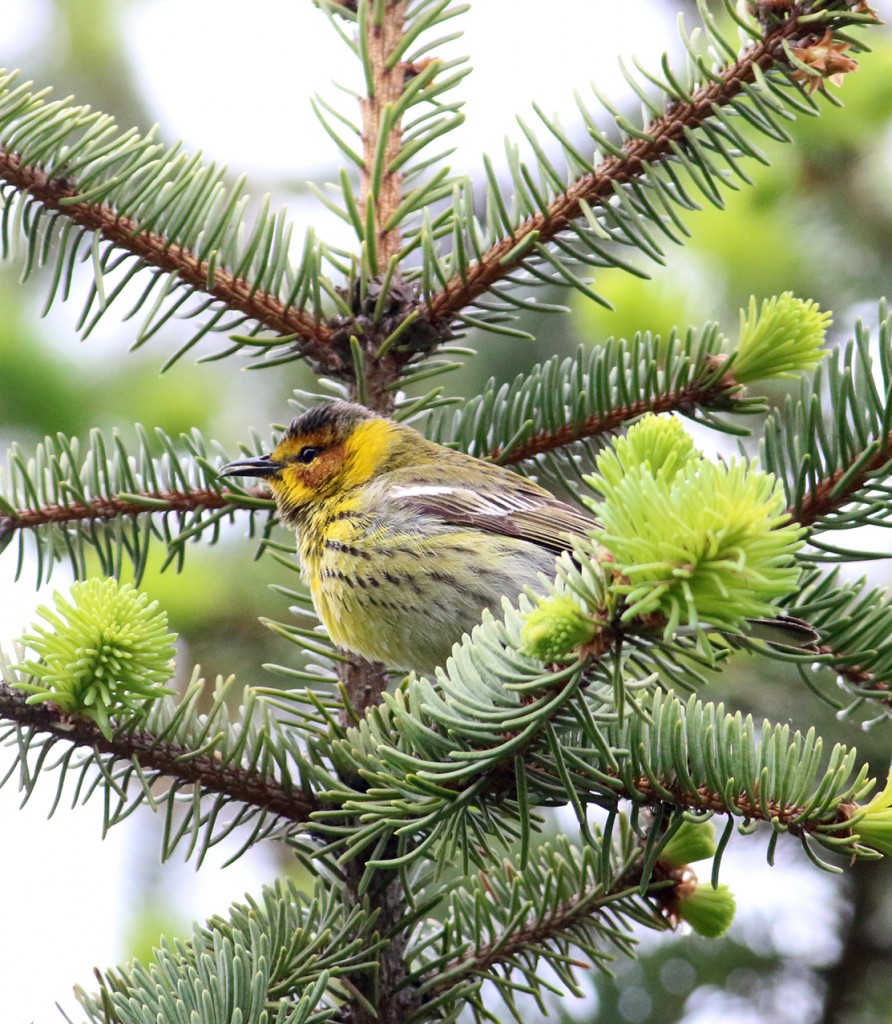
One of several point-blank male Cape May Warblers at Garrett. Garrett Mountain can be spectacular in spring, and it was great on this day.
9. Common Nighthawks. It was a good year for Common Nighthawks. I saw them perched at Garrett Mountain, perched again at Sandy Hook, I saw them migrating over my village while playing golf, and best of all, Jeanine and I saw and heard them doing their mating displays at Carranza Road. After learning that sound, I even heard them displaying over the local Shop-Rite parking lot. Seeing birds is nice, but watching interesting behaviors raises the experience to another level.
8. Gannet shows. If you’re interested in behaviors, Northern Gannets have to be one of the best birds to watch. Their plunge dives for food are amazing to observe, especially when they occur in large groups. This year Jeanine and I were fortunate to see Gannets feeding very close on two occasions. One day in April we took the Cape May ferry to Lewes, with Gannets feeding in the wake of the ferry for most of the ride across Delaware Bay. In March while walking around the Hook searching unsuccessfully for Glaucous Gulls, a stunning cluster of Gannets was plunge diving repeatedly off-shore, eliciting uncontrollable laughter at the constant barrage of gannets into the water, and then after emerging, they would fly to the back of the line and do it again. Wow.
7. Razorbills. It was a great year for Razorbills, at least for me. I had not yet seen them in New Jersey, so one of my goals was to sit patiently at Manasquan Inlet or Shark River Inlet or Barnegat Inlet and hope that we could see one this year. Well, I lost track of how many we eventually saw in the inlets, but it was probably somewhere around 8-10 Razorbills, with more than half of them giving great views. Now it’s time to find a Jersey Dovekie!
6. Deep water pelagic. I had only been on a single pelagic before this year, while vacationing in Washington. I had no real intention of doing one here, although I knew that I could pick up several lifers by doing a pelagic trip, and in the process find out whether I like this subset of birding. In September, I found myself spontaneously signing up for an overnight trip heading 90 miles from shore. The end result: four lifers seen and photographed, including two NJ review species, and two more lifers missed due to queasiness (nothing chucked overboard though!). It’s probably one of those things that looks better in the rear-view mirror than when you are going through it. But it WAS an adventure, and you don’t get to experience an adventure every day, do you?
5. Audubon’s Yellow-rumped Warbler. Jeanine and I were birding at Barnegat Lighthouse State Park in November, hoping that some western rarity might appear on the shrubs or treetops. I was dreaming about Mountain Bluebird or Townsend’s Solitaire or Say’s Phoebe. I was wrong. Instead, Jeanine spotted an Audubon’s Yellow-rumped Warbler with a fairly bright yellow throat that we got nice looks at while our cameras remained at our sides. With that yellow throat it was surprisingly easy to re-find it when it moved from bush to bush, feeding and mixing with other Yellow-rumps. Audubon’s is the western sub-species of Yellow-rumped Warbler that I hadn’t even thought of looking for due to the high background of Myrtle Yellow-rumps. We eventually thought of getting photos, but it disappeared behind a dune. When we returned home, we found out that Audubon’s is a NJ review species, the first one that Jeanine found herself. And a great find it was. We submitted reports to the NJ records committee, and we’ll find out next year if the sighting will be accepted without photos.
4. Lapland Longspur. Jeanine and I took ten canoeing trips into the Sedge Islands this year. On the last trip of the season in October, we weren’t sure what birds would still be around. While walking through the isolated stands of Spartina alterniflora that is predictably beginning to populate the sandflats, a bird moved in among the grasses. It eventually poked out and gave excellent views and photo ops. It was not a Saltmarsh Sparrow (which I suspected), or the better Nelson’s Sparrow (which I hoped for), but instead was an even better Lapland Longspur, a bird that was not on our radar for the day. As I’ve said before, one of my favorite things to hear when birding is “I wasn’t expecting THAT!”.
3. Sandwich Tern. In August Jeanine and I took our first-ever excursion walking 2.8 miles out to the tip of North Brig Natural Area, hoping for some of the rarer terns (think Black, Sandwich, Roseate, and maybe even Bridled). We were not disappointed. First of all, the beach was filled with birds, and I mean filled with birds for nearly the entire length. The species diversity was low, but the sheer numbers were stunning. Then when we reached the tip of the peninsula, Jeanine spotted a Sandwich Tern mixed in with a flock of Royals, just as I was ready to give up. Add to the days sightings an adult Lesser Black-backed Gull, 120 Red Knots, and 12 Piping Plovers, and you have a super day. With birding like that even the numerous greenheads become tolerable.
2. Colombia. The vast majority of my birding this year has been in New Jersey, with the exceptions of a single weekend in NY, a day trip to Delaware on the ferry, and a 12-day trip to the Santa Marta region of Colombia. This was a semi-guided trip, where my friend Pete/Pedro and I spent some days with a guide, and some days birding on our own in the Colombian rain forest, staying in local housing, not in large resorts. We’d wake up in nice location, whether in the rain forest, a coastal woodland, or in desert scrub, walk out the door and see what we could find. That’s an Adventure with a capital ‘A’. It’s always tough to adjust back to local birds after seeing toucans, motmots, guans, puffbirds, and flamingoes.

American Flamingoes in flight. My main target in Colombia, we were not disappointed, seeing a flock of hundreds.
1. Reddish Egret. Sometimes its hard to decide what the top birding moment of the year is. Not so this year. While canoeing in the Sedge Islands with my friend Chris, we came around a bend in a channel and spotted a dullish bird wading in the calmer and shallower water. I wasn’t sure what it was at the time, but told Chris that we should get photos. Fortunately, the bird was patient with us, allowing me to approach closely as I walked through the mucky Spartina marsh to get better lighting for photos. After we got home I immediately checked the field guides and found out that we had an immature Reddish Egret. More surprising to me was how rare this species is in NJ, with only two prior sightings, and happily, it stayed around for a total of 45 days, allowing many birders the opportunity to see it. Several times since then I’ve been introduced to new birders as ‘the guy who found the Reddish Egret’, my new title. I was able to see Red at least four more times on our canoeing expeditions, to the point where it became an expected sighting. What a great bird.
Many thanks to my wonderful birding partner Jeanine for sharing most of these outings (and rainbows and snake trips and kayak trips and stargazing), and for making even the least productive trip more enjoyable. It sure makes birding easier when you don’t have to find birds to have a good time.





